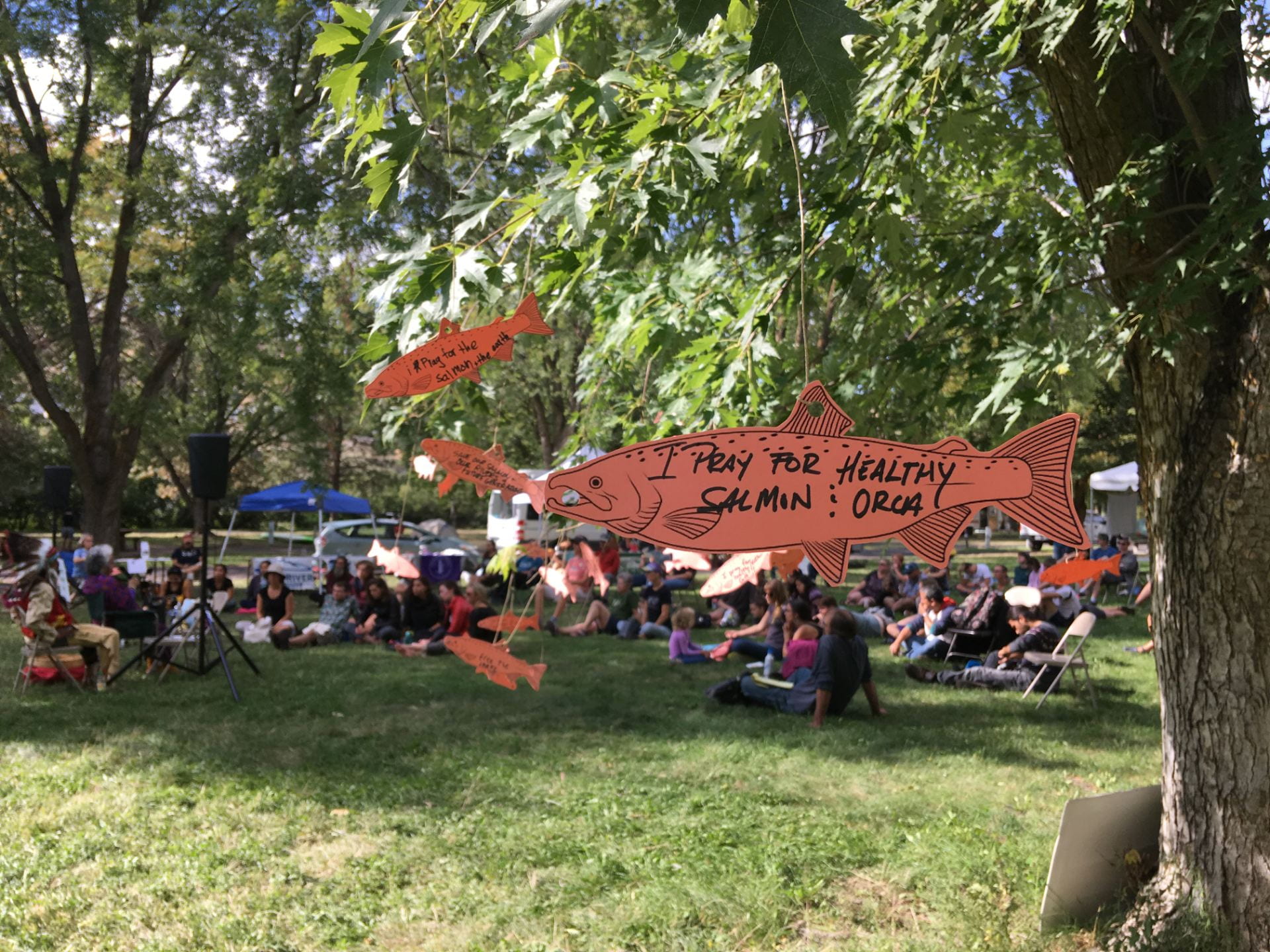Chapter 10: Case Study: Animal Welfare and Food Ethics

Since the late 2000s, there have been shifts in faith community attention to environmental issues. As director of Ohio Interfaith Power and Light from 2008 to 2010, it was a challenge to keep up with the active and growing interest of Ohio congregations to learn about and address climate change. But where climate change was perhaps the most popular issue in the late 1990s and early 2000s among environmentally-engaged faith communities, interest shifted in part towards sustainable food systems, as political controversy and well-funded climate denial PR campaigns made climate change more politically and culturally contentious.[1] By the 2010s, new attention and focus had emerged within faith communities to address food system issues, joining the existing engagement of the Jewish Food Movement on a range of issues, and intersecting with ongoing food and animal ethics movements.[2]
Traditionally, there have been several focal points in this area: animal rights and animal welfare; vegetarianism and veganism; food security and food systems associated with human health and nutrition; and environmental justice. Both secular and religious communities and organizations have been engaged in these issues, though with the rise of the environmental movement in the 1970s, the most prominent voices in animal and food choice movements have tended to be non-religious. More recently, religious-environmental concern for food and animal issues has increased [3], local food movements have multiplied [4], and veganism and other food-conscientious ideologies have been on the rise. [5]
Diverse and overlapping perspectives give shape to these issues. “Animal rights” views pertain to the legal rights and standing of non-human animals (and typically strictly prohibit harmful treatment or consumptive use of animals) while “animal welfare” perspectives promote the well-being and standards of living and treatment of non-human animals (and usually focus on minimizing the suffering of animals, if not prohibiting the killing of animals). Vegetarianism and veganism are connected to these approaches, as many individuals choose those diets based on their viewpoints on animal rights and welfare, particularly related to farm and laboratory animals. Just as concern has been raised over the welfare and treatment of animals in livestock farming, as well as associated environmental pollution from high concentrations of manure, so too has there been concern for the quality of food and environmental impacts of contemporary food systems, including: concern for the welfare of farm workers (especially migrant farm workers); the nutritional impacts of food deserts in inner cities; opportunities for urban agriculture; and the shortening of farm-to-table food chains through promotion of local food systems. Although these topics deserve much more attention (whole courses and whole books are devoted to these topics), this chapter will aim to introduce some of the dynamics, concepts, and questions raised by these complex areas of concern, scholarship, and action.
Click the links below to explore these topics on the RESTORExchange database.
- Chapter 9 discussed some aspects of the climate denial movement; Robert Brulle’s work is the best known peer-reviewed study of climate denial funding: https://drexel.edu/now/archive/2013/December/Climate-Change/ ↵
- There is a very broad background of religious engagement with food and animal questions, as many religions have dealt in highly specific ways with food and animal issues for thousands of years; the focus of this chapter, however, will tend toward the environmentally salient features of religious, moral, and ethical concerns for food and animals that have vied for widespread attention in American culture since the 1970s. ↵
- The Jewish Food Movement (as described by Nigel Savage at the links above and also here) is one example; the Oxford Centre for Animal Ethics Religion and Animals Project is another; the American Academy of Religion’s Animals and Religion Unit is another. ↵
- The Ohio and West Virginia Food Hub Network is an example of some of the organizing taking place to support local food systems. ↵
- For example: https://harvardmagazine.com/2017/07/the-rise-of-vegan-culture ↵
